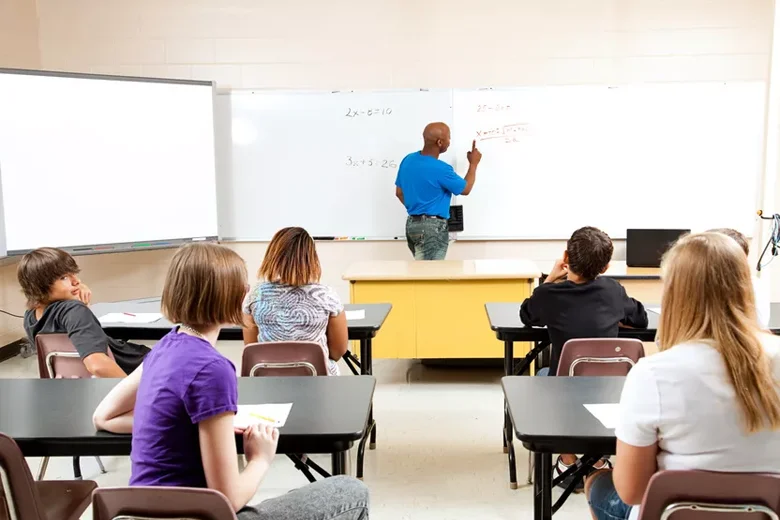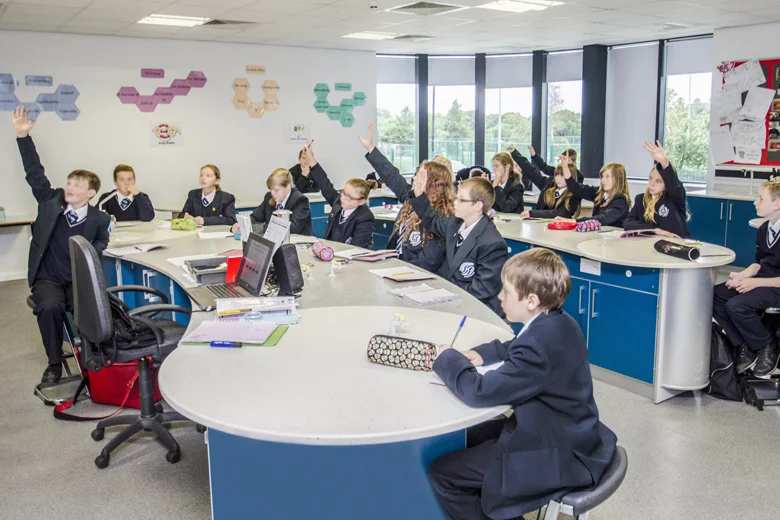How Effective are these Five Teaching Styles?
Over the last century, teaching methods have changed dramatically. Cultural shifts, technological advancements, and societal changes have all shaped teaching as we know it.
Modern classrooms are spaces where teachers can choose from various approaches to engage their students. But with so many options available, how do you know which teaching style works best?
This blog post will explore five teaching styles—Authority, Delegator, Facilitator, Demonstrator, and Hybrid—and cover their effectiveness for the needs of people today.

The Authority Teaching Style
The Authority style is the more traditional approach. The teacher stands at the front of the class and delivers information while students take notes..
This style is ideal for sharing information in a quick and timely manner. However, it does not allow students to ask questions or discuss ideas meaningfully. While it works well for some classroom environments, especially in higher education, it might not suit all learners.
Advantages
- Efficient for delivering large amounts of information.
- Works well in large group settings.
Challenges
- Limited student engagement.
- Caters to a limited number of learning styles.

The Delegator Teaching Style
In the Delegator style, the teacher takes a step back. They become more of an observer, encouraging learners to work in groups. This approach is especially popular in practical subjects, like science labs or group projects.
The Delegator style encourages learning from person to person. It is suited for building teamwork skills. However, some argue this teaching style reduces the teacher’s authority in the classroom. It might also not be ideal for students who need more direct guidance.
Advantages
- Encourages collaboration and peer learning.
- Develops teamwork skills.
Challenges
- It may not suit all subjects or learners.
- Requires careful management to ensure everyone participates.

The Facilitator Teaching Style
The Facilitator style is about guiding learners to find answers themselves. Educators ask questions and set up activities encouraging learners to think critically and solve problems.
This teaching style is great for engaging learners and helping them develop a deeper understanding. It helps students become more independent learners. However, it can be challenging in large classrooms as it requires more one-on-one interaction.
Advantages
- Promotes critical thinking and problem-solving skills.
- Encourages self-directed learning.
Challenges
- It can be time-consuming.
- It may be difficult to implement in large classes.
At Innova Design Group, we’ve helped design classrooms and educational learning spaces that support this teaching style, with flexible furniture arrangements allowing easy group work and discussions.

The Demonstrator Teaching Style
The Demonstrator style combines lectures with practical demonstrations and multimedia presentations. It is particularly useful for subjects that require visual or hands-on learning, like art, music, or physical education.
This style facilitates engagement by providing a variety of lessons. It caters to different learning styles by combining verbal explanations with visual aids and practical examples. However, meeting every student’s needs in larger classes can be challenging.
Advantages
- Caters to different learning styles.
- Keeps lessons varied and engaging.
Challenges
- It can be time-consuming to prepare.
- It may still limit individual student interaction in large classes.

Hybrid Teaching Styles
The Hybrid style is a mix of different approaches. Educators using this style adapt their methods based on the subject, the students’ needs, and their own preferences. It is especially useful for teaching varied subjects from English to Science.
This flexible approach allows educators to reach a wider range of learners. However, some argue that accommodating too many learning styles at once might dilute the learning experience.
Advantages
- Highly adaptable to different subjects and student needs.
- Combines the benefits of multiple teaching styles.
Challenges
- It requires careful planning to be effective.
- It may become confusing if not well-structured.
Which Teaching Style is the Most Effective?
Ultimately, there is no one-size-fits-all answer to this question. The most effective teaching style will depend on several factors:
- The subject being taught.
- The size and layout of the classroom.
- The age and learning needs of the learners.
Important: The key to effective teaching is flexibility. Smart educators should use a mix of styles, adapting their approach based on their students’ needs and the subject’s demands.
At Innova Design Group, we understand that educational space design is essential to supporting different teaching styles. Our education interiors are flexible for this reason.
We manufacture and install furniture solutions for universities, schools, and colleges that help educators easily switch between teaching methods and approaches, supporting everything from lecture-style presentations to small group work.
Contact Innova Today Regarding Your Refurbishment Project
At Innova Design Group, we put people’s safety and lab design best practices at the core of our laboratory spaces and solutions. With over 25 years of experience creating customised interior design solutions for the education and commercial sectors, we are well-equipped to handle every aspect of your lab makeover.
Our specialists design labs, manufacture lab furniture, and provide lab fit-out services tailored to your specialised requirements. Contact us today at 0161 477 5300 or by emailing hello@innovadesigngroup.co.uk.


